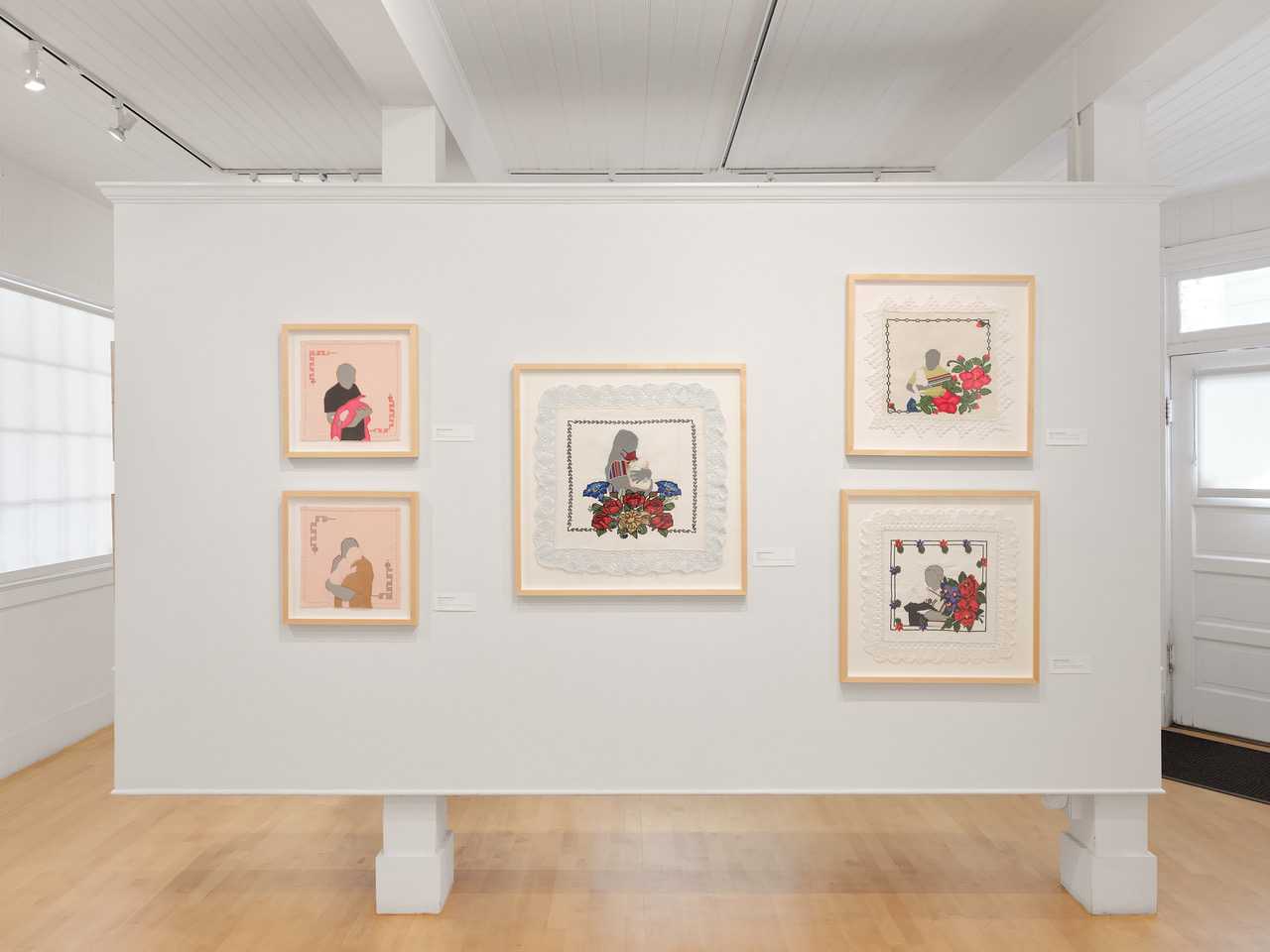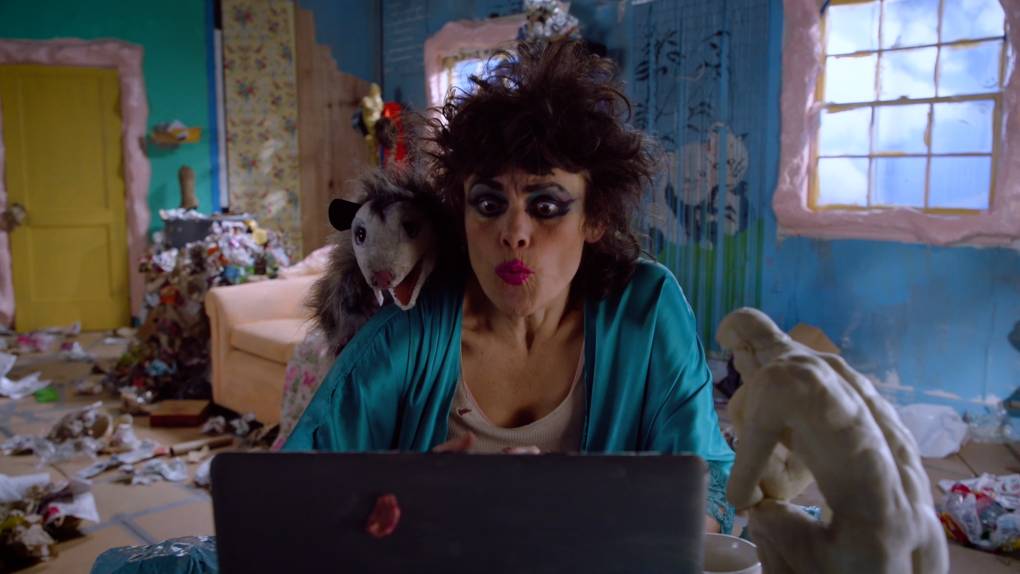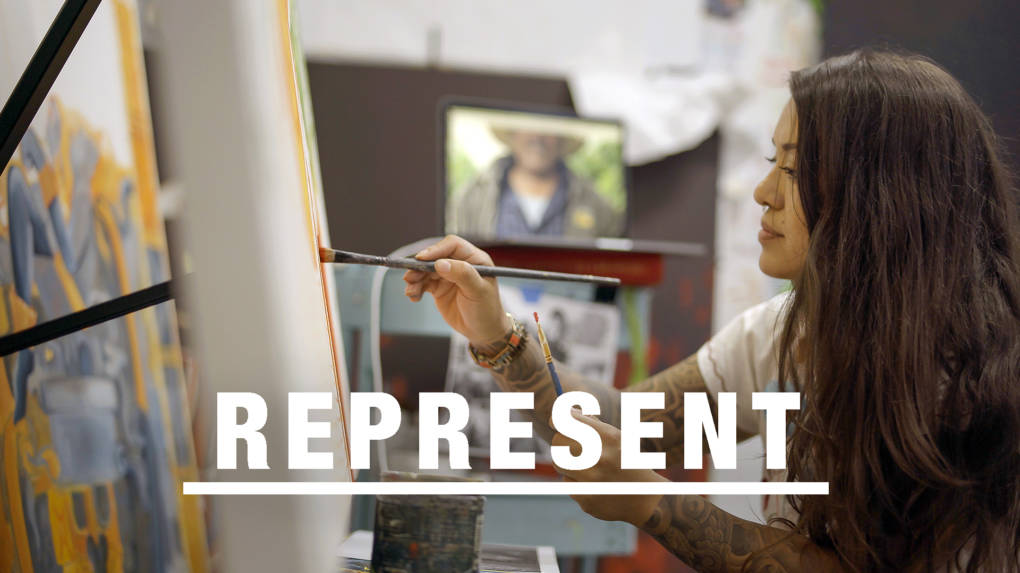Family separation comes in many forms. Some, more obvious than others. Separation caused by immigration policies is currently top of mind for many North and South Americans, but that’s only one element at play in Napa-based artist Arleene Correa Valencia’s most recent exhibition, Llévanos Contigo / Take Us With You at the Bolinas Museum.
An Artist Stitches Stories of Family Separation at the Bolinas Museum

“I’ve spent my entire life searching for a physical home,” says Correa Valencia, who immigrated to the United States from Mexico at a young age. “I’m learning that maybe home is family.” For the artist, who isn’t able to have children of her own, the work in the show is also about that loss of legacy.
The exhibition features three interrelated bodies of work: textiles, copperplate prints and repurposed family documents — all of which either include or reference the artist’s family photographs and letters, as well as cultural traditions passed down through generations. For Correa Valencia, making art in collaboration and communion with family members serves as a way of preserving their connection.
Selections of family ephemera are framed in parings of snapshots and letters written by a young Correa Valencia, her mother and brother in Michoacán, to her father in the United States. The artist recalls her mother holding her hand to help her write the letters, and thinks of them as her earliest works of art. This posits separation as a genesis, the beginning of Correa Valencia’s own immigration journey and art practice.

Elsewhere, photographs have been translated into black-and-white copperplate prints with additional etchings and embroideries decorating the images. These prints also feature lengthy, poetic titles, passages of text cherry-picked from the family correspondences. With their context slightly altered, they become lyric poems.
A print of a man in shorts and a striped shirt, embroidered with a flower and featuring an etching of a Mayan deity, features a title telling the story of a man dying in the trunk of a car while attempting to cross the border. The text is a startling juxtaposition to an image so full of life, suggesting the ambient violence circulating the immigrant experience in the Americas.
Another print of a young Correa Valencia and her brother is adorned with an etching inspired by her brother’s chest tattoo. The title is a message from their mother imploring their father to care for them if anything should happen to her, especially “our baby girl.” Here again, the text creates an unconscious layer to the images, infusing it with a complex pathos.
The majority of the exhibition consists of 14 brightly colored wall-hanging textiles, varied in size, embroidered with figurative outlines also based on family photographs.
“I call them paintings,” says Correa Valencia, who trained as an oil painter through graduate school and only recently took up textile work. She learned the medium from her mother-in-law during the months of the pandemic lockdown; the pieces weave together intricate references to culture and community.

Often, the background fabric Correa Valencia adorns with her illustrations is a textile purchased in El Salvador or Mexico — or, in the case of the smaller works, tortilla napkins taken from family members’ kitchens. Many of the figures’ clothes are made from actual articles of clothing.
In both Absent and Present, embroideries on large Salvadoran fabrics featuring geometric patterns, a figure holds a child in their arms. In Present, the adult figure is filled in with a patterned fabric, while in Absent both adult and child dissolve against the background as ghostly outlines of white thread.
One of the largest textiles, Captured: Birds in Flight, features a two-toned blue background with the outlined figures of three children dressed in repurposed family clothing. Two girls pose playfully while a boy wearing the El Salvador coat of arms reaches both hands up in a dramatic gesture of surrender. Three birds, embroidered in a traditional Salvadoran decorative style, circle overhead.
The lack of recognizable traits and facial features in the figures creates a sense of distance and disappearance. I get the same feeling of nostalgia when I look at a faded photograph. Correa Valencia’s works summons the intimate yearning of straining to recall a hazy memory.
In seamless collaboration, she blends her own embellishments into the tortilla napkins’ preexisting floral embroideries. Mei Mei shows a woman in an N-95 mask cradling a baby, the figure sprouting from the center of a decorative flower. The image is inspired by a photo of Correa Valencia holding her niece, and it’s stitched into a napkin handmade by one of the artist’s own childhood caretakers.
Correa Valencia’s show made me think of the ways thread is activated in the service of memory. We tie string around our fingers to remember things. In myths across cultures, people are connected by red thread, its delicacy underscoring tenuous ties — and the ease of forgetting.
It also reminded me of the poem “Separation” by W. S. Merwin: “Your absence has gone through me / Like thread through a needle. / Everything I do is stitched with its color.”
Llévanos Contigo / Take Us With You makes good on Merwin’s promise that absence and presence are two sides of the same coin. Correa Valencia’s invocations of family are a celebration of connection as much as they anticipate inevitable separation — like a stitch that doubles back on itself. These aren’t threads that tie up in a neat bow, but they might be lifelines.
‘Llévanos Contigo / Take Us with You’ is on view at the Bolinas Museum (48 Wharf Rd., Bolinas) through Aug. 4, 2024.



